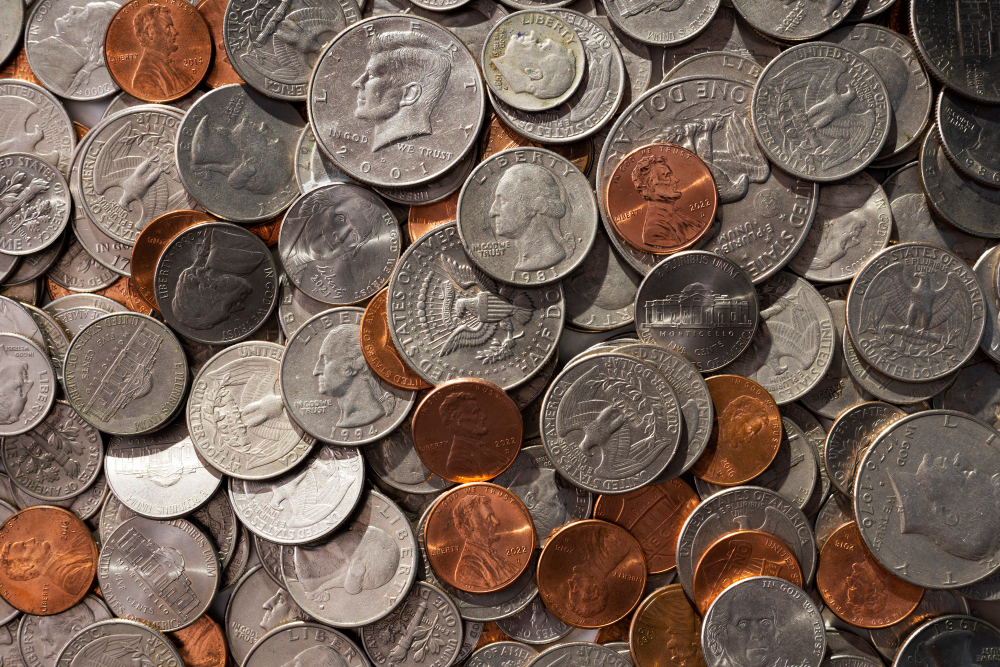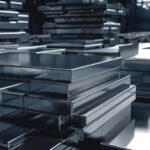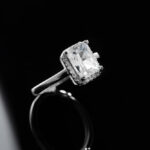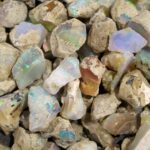Pennies, the smallest denomination of U.S. currency, have been in circulation for over two centuries. But have you ever wondered what these tiny, copper-colored coins are actually made of? Contrary to what some may think, pennies are not composed entirely of copper. They consist of a unique combination of metals that give them their distinct appearance and durability. In this article, we will delve into the composition of U.S. pennies, examining the materials used, the history of their composition, and their current significance in today’s currency system.

A Brief History of the Penny
Before we dive into the composition of pennies, let’s take a moment to appreciate their historical significance. The U.S. penny, or one-cent coin, has a rich history that dates back to the late 18th century. The Coinage Act of 1792 established the U.S. Mint and authorized the production of various denominations of coins, including the penny. The first U.S. pennies, known as Large Cents, were made of pure copper. These early pennies were hefty and large, featuring designs like the Flowing Hair and Liberty Cap.
In the 1850s, as the cost of producing large copper coins rose, there was a need to explore more cost-effective options. This led to the introduction of the Flying Eagle Cent in 1856, the first small-sized U.S. penny made of an alloy of copper and nickel. Eventually, the composition of the penny would undergo further changes, leading to the modern coins we use today.
The Composition of U.S. Pennies
- The Copper Core
The current composition of U.S. pennies is primarily a core of zinc that is coated with a thin layer of copper. This zinc core is what gives the penny its distinct weight and structure. The reason for introducing a zinc core was primarily economic. As the price of copper rose and exceeded the face value of the penny, it became impractical to mint pennies from pure copper. In 1982, the U.S. Mint made a significant change in penny composition.
1.1 The Copper Plating
The outer layer of a U.S. penny is composed of pure copper. This thin layer of copper provides the penny with its familiar reddish-brown appearance. While the core of the coin is mainly zinc, the copper plating ensures that the coin maintains the traditional look and feel of a copper penny.
- The Alloy Transition (1982)
The year 1982 marked a significant turning point in the composition of U.S. pennies. Prior to 1982, pennies were made of 95% copper and 5% zinc. However, in response to the rising cost of copper, the U.S. Mint transitioned to a composition that included primarily zinc. Modern pennies, since 1982, are made of 97.5% zinc and only 2.5% copper.
2.1 Advantages of Zinc Composition
The decision to shift to a zinc core for pennies had several advantages. First and foremost, it significantly reduced production costs. As the price of copper continued to increase, minting pennies from pure copper became financially impractical. Additionally, the use of zinc made the penny lighter, which helped cut transportation costs.
- The Penny’s Appearance
The copper plating of the penny is what gives it its iconic color and appearance. The U.S. Mint goes to great lengths to ensure the copper plating adheres to the zinc core correctly. This is done through an electrolytic process where the penny is submerged in a copper sulfate solution, and an electrical charge is applied to allow the copper ions to bond with the surface of the zinc core.
- The Preservation of Appearance
One of the challenges in penny production is ensuring that the copper plating remains intact and the penny retains its color over time. Excessive wear and tear can expose the zinc core, giving the penny a silvery appearance, which is commonly seen in older, heavily circulated coins.
Comparing Pennies to Other U.S. Coins
When it comes to the composition of U.S. coins, pennies are unique. Unlike pennies, other U.S. coins like nickels, dimes, and quarters are not composed of two different materials. Let’s explore the composition of these other coins and why they differ from pennies.
- Nickels
Nickels are composed of a solid material. The alloy used for nickels consists of 75% copper and 25% nickel. This composition provides nickels with their silver-white color and distinctive weight. Unlike pennies, nickels are not prone to the same issues of wear and tear, as their composition is more robust. The combination of copper and nickel also makes nickels less susceptible to corrosion.
- Dimes
Dimes are smaller in size compared to nickels and quarters but share a similar composition with nickels. They are made of the same 75% copper and 25% nickel alloy. This composition ensures that dimes are durable and resistant to wear.
- Quarters
Quarters are the largest of the coins we commonly use, and they are also made of the 75% copper and 25% nickel alloy. This composition provides them with their characteristic silver appearance. Quarters, like dimes and nickels, are less prone to corrosion and wear compared to pennies.
The Economic Significance of Penny Composition
The change in penny composition reflects the economic realities of producing and maintaining currency. The rising cost of copper was a driving force behind the transition to a zinc core for pennies. This shift had a significant impact on the production and maintenance of pennies, and it continues to influence discussions about the future of the U.S. penny.
- The Cost of Copper
Copper is a valuable commodity that is used in various industries. As the demand for copper increased over the years, so did its price. This made it increasingly expensive to produce pennies from pure copper. The U.S. Mint had to find an economical solution to continue minting pennies without incurring a loss.
1.1 Impact on the U.S. Mint
The rising cost of copper affected the U.S. Mint’s budget for coin production. The Mint needed to find a way to reduce expenses while still maintaining the quality and integrity of the currency. The transition to a zinc core with a copper plating was a strategic move to achieve this goal.
- The Debate over Penny Composition
The shift in penny composition led to ongoing debates about whether the penny should continue to be produced at all. Some argue that the production cost is higher than the penny’s face value, leading to a net loss for the government. The zinc core and copper plating help reduce costs, but there are still concerns about the overall economic efficiency of producing pennies.
2.1 The Penny Abolition Debate
The debate over the abolition of the penny has gained traction in recent years. Advocates for eliminating the penny argue that the cost of production outweighs its utility, and rounding to the nearest five cents in cash transactions would be more efficient. The penny’s detractors contend that the cost savings from eliminating the penny could be substantial.
2.2 The Penny’s Cultural and Historical Significance
Despite the economic arguments against the penny, it has a deep-rooted cultural and historical significance. The penny is an enduring symbol of everyday transactions and is often associated with charitable giving, as seen in the phrase “a penny for your thoughts” or the tradition of tossing pennies into fountains for good luck.
The Lifecycle of U.S. Pennies
The composition of U.S. pennies has evolved over time, but the coins themselves also have a lifecycle with distinct stages. Understanding the journey of a penny from production to circulation can provide insight into how these coins serve their purpose in the economy.
- Minting Process
The production of pennies begins at one of the U.S. Mint facilities, which include the Philadelphia Mint and the Denver Mint. The process involves creating blank planchets from the zinc and copper alloy. These blank planchets are then stamped with the design and inscriptions that make them recognizable as U.S. pennies.
1.1 Quality Control
Quality control is an integral part of the minting process. Pennies must meet specific size, weight, and design criteria. Any coins that do not meet these standards are recycled and reminted to ensure that only high-quality pennies are released into circulation.
- Circulation
Once minted and quality-checked, pennies are distributed to banks and financial institutions. From there, they enter circulation and become part of everyday transactions. Pennies are commonly used for small purchases, such as buying candy or as exact change for a parking meter.
2.1 Wear and Tear
Pennies are among the most circulated coins in the U.S. currency system, and as a result, they often experience significant wear and tear. This can lead to the exposure of the zinc core, giving older pennies a different appearance.
- Collecting and Hoarding
While pennies are often considered the lowest denomination in everyday transactions, they also have a dedicated following among numismatists (coin collectors). Collectors search for rare and valuable pennies, including those with minting errors or unique designs.
Conclusion
The composition of U.S. pennies, with their zinc core and copper plating, reflects a delicate balance between historical tradition, economic considerations, and the enduring cultural significance of the penny. The transition from pure copper to a zinc core with copper plating in 1982 was a pragmatic response to the rising cost of copper and the need for cost-effective coin production. It also sparked debates about the penny’s continued relevance and led to discussions about its potential abolition.
Despite these debates, the U.S. penny remains a symbol of everyday transactions, charitable giving, and a collector’s fascination. Its lifecycle, from minting to circulation, reflects its essential role in the currency system. Understanding what a penny is made of is not just a matter of metallurgy; it’s a window into the intersection of economics, history, and culture that defines the U.S. penny’s enduring place in American society.





